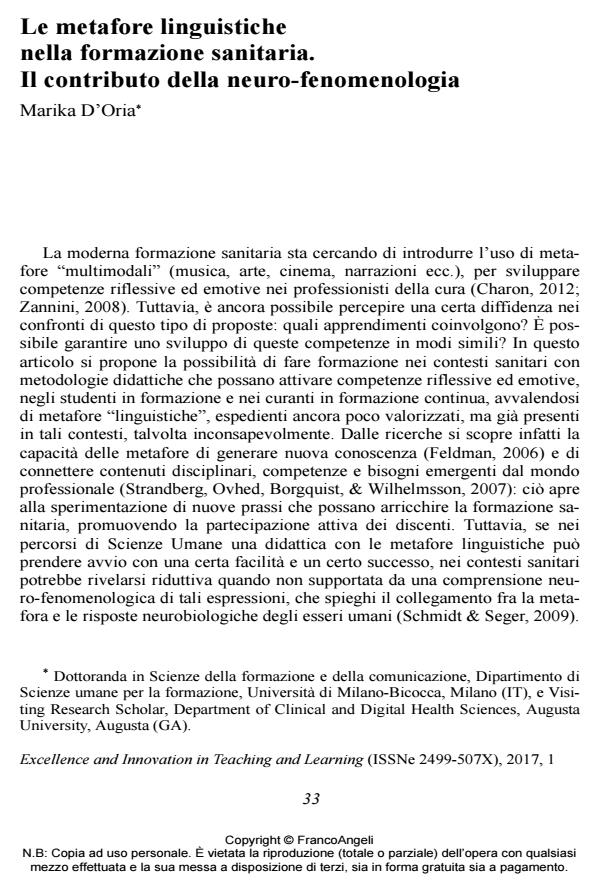Linguistic Metaphors in Health Education. The Contribution of Neuro-phenomenology
Journal title EXCELLENCE AND INNOVATION IN LEARNING AND TEACHING
Author/s Marika D’Oria
Publishing Year 2017 Issue 2017/1
Language Italian Pages 17 P. 33-49 File size 178 KB
DOI 10.3280/EXI2017-001003
DOI is like a bar code for intellectual property: to have more infomation
click here
Below, you can see the article first page
If you want to buy this article in PDF format, you can do it, following the instructions to buy download credits

FrancoAngeli is member of Publishers International Linking Association, Inc (PILA), a not-for-profit association which run the CrossRef service enabling links to and from online scholarly content.
Metaphors can enhance students’ reflective skills. After the advantages and the limitations showed in the literature review, a neuro-phenomenological approach suggests how to use linguistic metaphors in health education.
Keywords: Linguistic metaphor; health education; neuro-phenomenology; adult education; innovative teaching; literature review.
Marika D’Oria, Le metafore linguistiche nella formazione sanitaria. Il contributo della neuro-fenomenologia in "EXCELLENCE AND INNOVATION IN LEARNING AND TEACHING" 1/2017, pp 33-49, DOI: 10.3280/EXI2017-001003